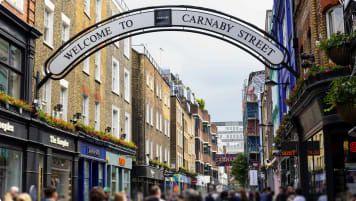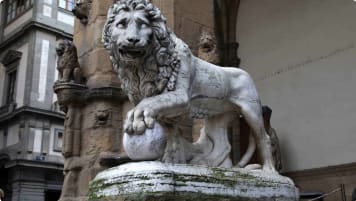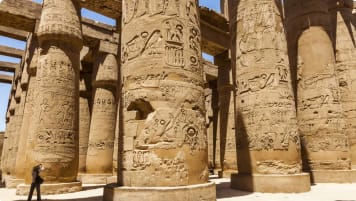Early History of Sicily: From the Phoenicians to the Arab Conquest
Early History of Sicily: From the Phoenicians to the Arab Conquest (800 BC to the 10th Century) Sicily in Southern Italy is the largest island in the Mediterranean, separated from the mainland by the Strait…
10 Oct 19 · 9 mins read
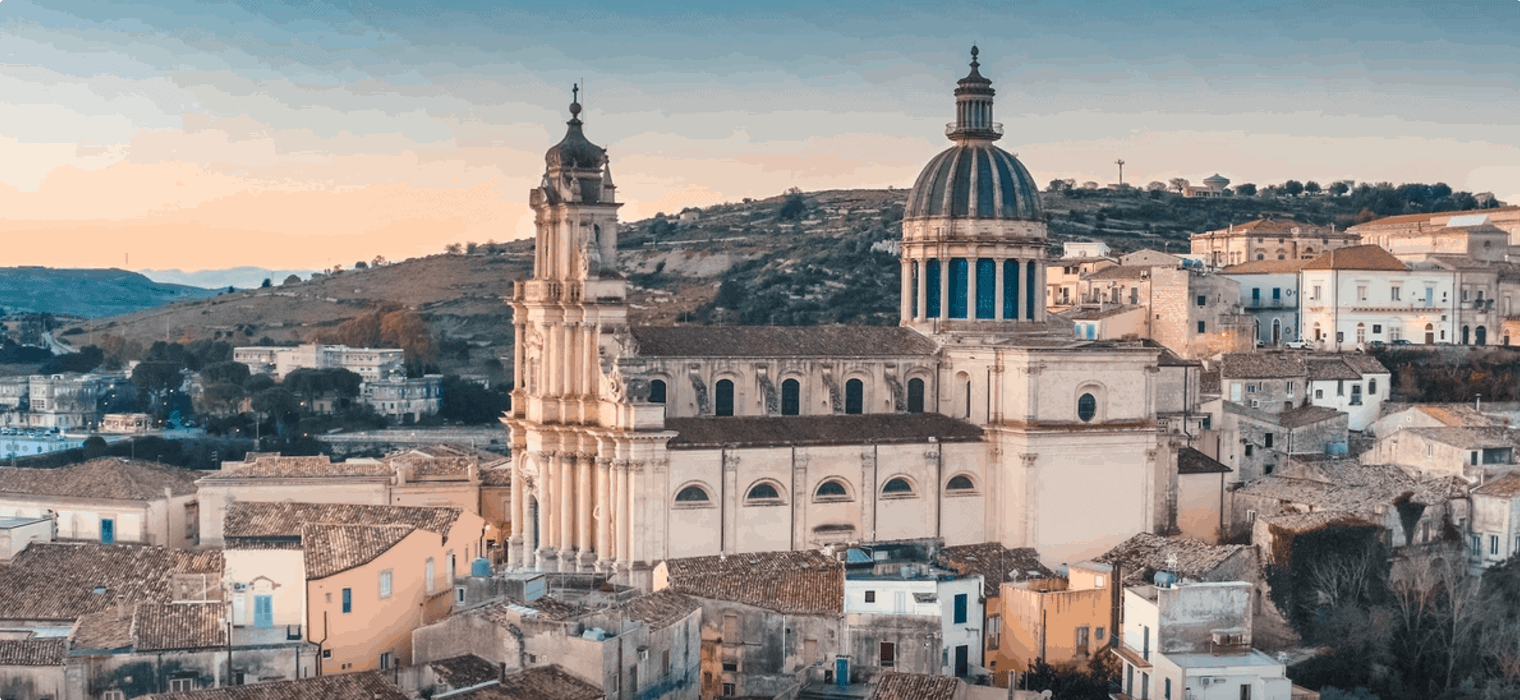
Early History of Sicily: From the Phoenicians to the Arab Conquest (800 BC to the 10th Century)
Sicily in Southern Italy is the largest island in the Mediterranean, separated from the mainland by the Strait of Messina and lying just 160 kilometres from Tunisia, the northern tip of Africa. Together with its surrounding islands (Egadi, Lipari, Pelagie, and Panteleria), Sicily forms an autonomous Italian region called Regione Siciliana.
Given its size, control of the island meant control of the sea lanes around it and so it was in an important strategic position. Sicily was also of vital importance in growing crops – the Romans who controlled the island for almost seven centuries enjoyed the benefit of the crops grown and the taxes raised. The fertile hills allowed for grain crops to be grown with an abundant return, providing food to the home countries of the invaders, making Sicily through the ages, an attractive territory to invade.
 Today, Sicily’s long summers, thousand-kilometre coastline, and world-renowned wine and cuisine attract visitors from all over the globe. The Sicilian capital of Palermo has been named Capital of Culture for 2018 by Italy’s Ministry of Culture, a title that brings with it a million-euro award for the promotion and public investment of its rich cultural heritage and in order to further boost its tourism industry.
Today, Sicily’s long summers, thousand-kilometre coastline, and world-renowned wine and cuisine attract visitors from all over the globe. The Sicilian capital of Palermo has been named Capital of Culture for 2018 by Italy’s Ministry of Culture, a title that brings with it a million-euro award for the promotion and public investment of its rich cultural heritage and in order to further boost its tourism industry.

Sicily also has a vivid history, shaped by settlements dating back to antiquity, and years-long sieges launched by foreign empires competing for control of this island. Those who visit the island can enjoy a plethora of fascinating historic sites, from Ancient Greek ruins to beautiful Baroque churches.
This article will cover Sicily’s early history, from the time of the Phoenicians to the Arab conquest of the island in the 10th Century and everything in between.
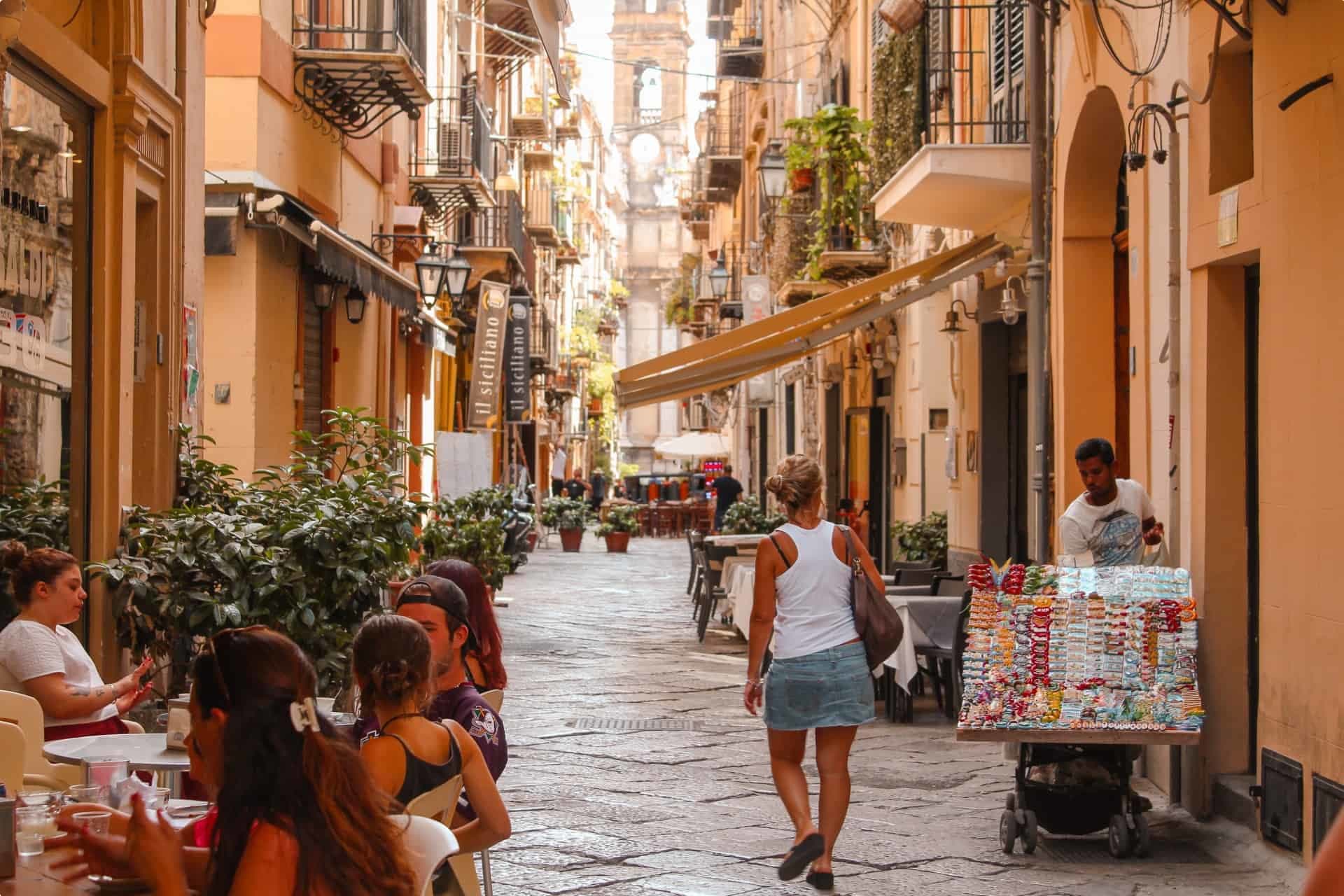
Foreign Powers in Sicily
The official language of Sicily is Italian, but most locals speak Sicilian (Siculo) and its many dialectal derivatives. The many civilisations that invaded the island left their mark on the language and today, Sicilian has elements of Greek, Catalan, Spanish, Arabic, French and Provençal. For example, the Italian word for ‘snail’ is lumaca but is babbaluciu in Sicilian, from the Arabic babūš and the Greek boubalákion. The Italian word for ‘cherry’ is ciliegia, but in Sicilian it is cirasa, from the Greek word kerasós.
The waves of foreign power left an indelible impression not just on Sicily’s language but also on its food, culture, art, and architecture.
Phoenicians
Prior to the Greeks arriving in Sicily, it was already inhabited by three peoples:
- the Siculi or Sicels in the east (from whose name the name of the island is derived),
- the Sicani to the west,
- and the Elymians in the extreme west.
Little is known about them now, save for bits and pieces of myth and obscure information—the Siculi spoke an Indo-European language, the Sicani most likely emigrated from Catalonia (the Balkans), and the Elymians were probably refugees from Troy, as mentioned by John Julius Norwich in his book Sicily: A Short History from the Ancient Greeks to Casa Nostra (2015).
Sicily also had Phoenician settlements at this time. The Phoenicians (who called themselves the Canaanites) were said to have originated from a region in the Persian Gulf, but they are notable sea traders who founded settlements across the Mediterranean, stretching across what is now Syria, Lebanon, and northern Israel.
The Phoenicians who ventured westward to the Mediterranean were not looking for land to settle but for land to serve as ports of trade on the route from Phoenicia to Spain. The Assyrians, who were in power at the time, drove up the demand for silver, and the Phoenicians sent expeditions to Spain to retrieve this precious metal.
Unlike the Roman Empire but similar to the Greek’s Magna Graecia, the Phoenician city-states did not belong to an empire with a recognised central power but were simply a loose coalition sharing a language and a common culture. Their important cities were Carthage in modern-day Tunisia and the city of Zis (Panormos in Greek; now the Sicilian capital, Palermo) in Sicily. Zis was founded in 800 BC as a trading post.
The ancient port can be found in what is now Quattro Canti (Piazza Vigliena), and the old walls of Zis are visible in Piazza Conte Federico. The ‘Carthaginian Cemetery’ on Corso Calatafimi is also a remnant of the Phoenician settlement.
Greeks
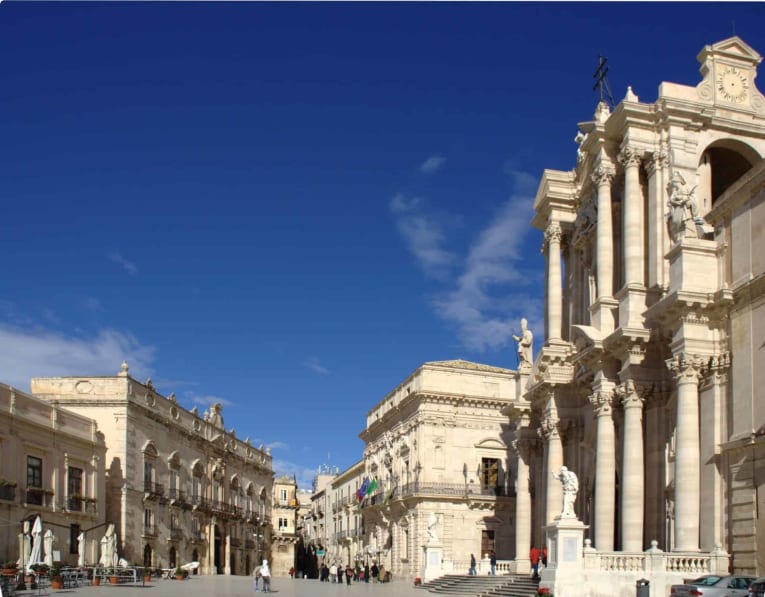
The Greeks settled on the island and built towns between the 8th and 6th centuries BC. The most important Greek colony was Siracusa (Syracuse), the birthplace of Archimedes. During the 5th century BC, Siracusa equalled Athens in size. The Greeks and the Phoenicians co-existed on the island, forcing the Sicels and the Sicanians to the centre of the city.
But it was by no means a peaceful co-existence. Conflict regularly broke out between the Greeks and the Phoenicians, between the Greeks and the Sicels and Sicanians, and even among the rival Greek colonies themselves.
The island, eventually, became Greek in look and traditions. Through trade and cultural exchange, the native groups gradually took on their traits. The Phoenicians did not have the manpower that the Greeks did, and the Greek colonies dwarfed the Phoenician settlements.
Gelon the Tyrant takes charge of Sicily
The tyrant Gelon was one of the most well-known military leaders who rose to power during this period. He was a commander serving the tyrant Hippocrates of Gela, who was killed by the Sicels in battle. Gelon seized the throne in 491 BC after Hippocrates’ death, and forced half the population of Gela to move to Syracuse with him in 485 BC. On Gela’s empty throne he placed his younger brother, Hiero, to rule in his stead. With the swell in population and Gelon’s merciless rule (he placed most of the population under slavery) the city of Syracuse became prosperous.
Gelon married Demareta and found an ally in her father, Theron, tyrant of the city of Acragas. Gelon and Theron soon took control of most of Greek Sicily. Fearing defeat, Anaxilas, leader of the still-independent city of Messina, appealed to Carthage. In 480 BC, Carthage landed in Palermo and moved north to attack but were defeated by Gelon’s army, which had marched from Syracuse to put an end to the Carthaginian siege.
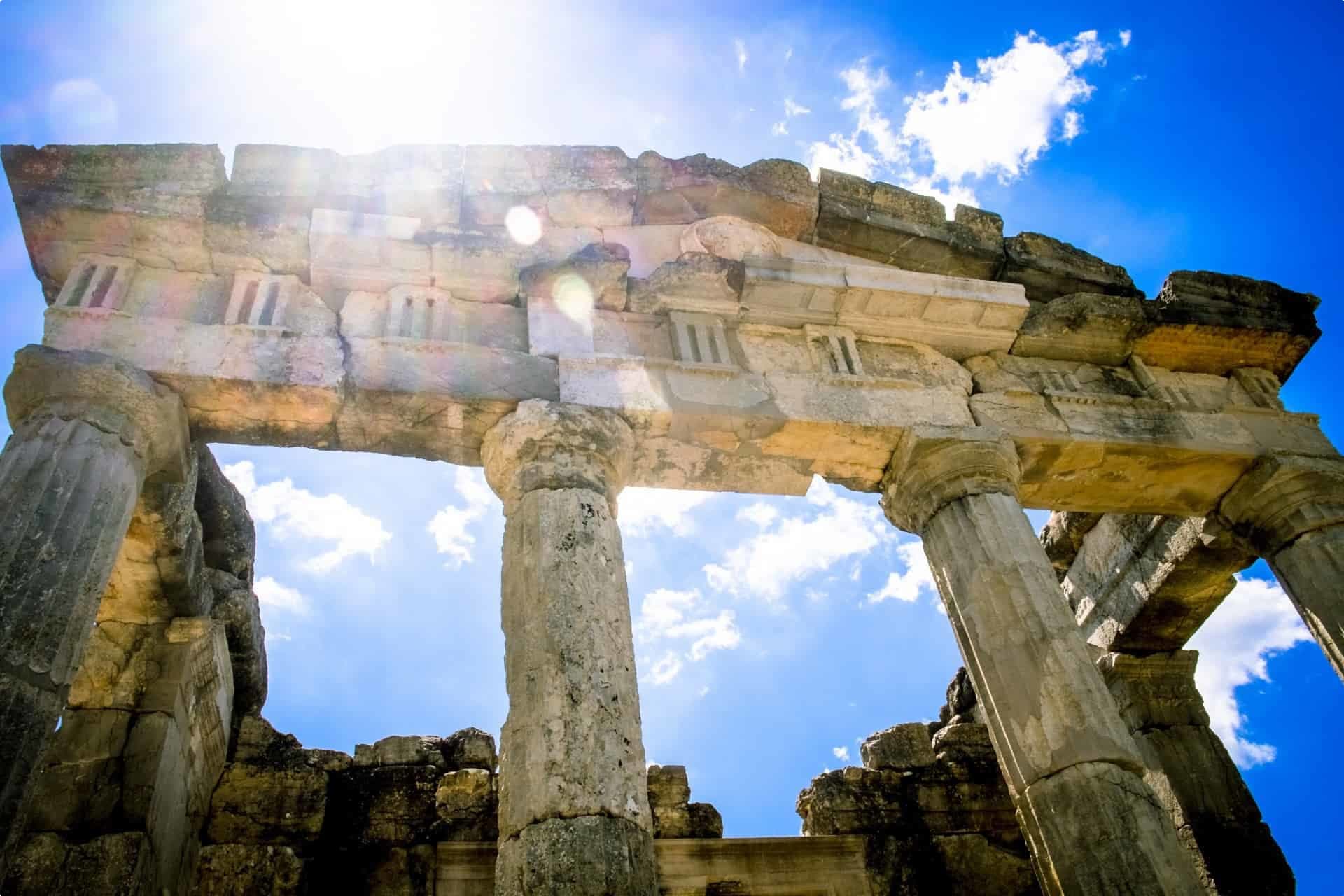
Carthage’s Revenge
The Peloponnesian War (the conflict between Athens and Sparta) broke out in Greece, and war reached Sicily by way of the Sicilian city of Segesta, which appealed to Athens for help against their rival city of Selinus. Athens sent an expedition, but by the time the soldiers landed in Sicily, Segesta was all but forgotten. Athens, now hoping to conquer the island, attacked Syracuse. After a two-year battle, however, Athens was forced to retreat.
Segesta then requested aid from Carthage. Carthage, perhaps still smarting from their earlier loss to Gelon, returned to Sicily with a bigger army, laying waste to Acragas and Gela. Mysteriously, the Carthaginians returned home before reaching Syracuse. (Historians attribute the retreat to the outbreak of a plague.)

Carthage and Sicily signed a peace treaty, where it was agreed that the Carthaginian settlements built on the far west of the island would remain under Carthage’s control.
Visitors to Sicily could still see the Greeks’ strong mark on the island, including Agrigento’s Valle dei Templi, Segesta’s Greek temple and ancient theatre, and the Ancient Greek ruins in Syracuse.

Romans arrive around 264BC
Rome was beginning to emerge as a power in the Italian peninsula, defeating rivals and incorporating them into the Roman Republic. Carthage, however, stood in the way of Roman domination in the western Mediterranean.
The two powers fought in the Punic Wars (‘Punic’ has the same root as ‘Phoenician’), the first of which began in 264 BC, when Carthage intervened in a dispute between the cities of Messina and Syracuse, following an appeal for aid from Messina. Messina had also asked help from Rome, but the Romans didn’t respond quickly enough.
When Rome finally sent help, their troops forced the Carthaginians out of the city. The Romans failed to gain control of Sicily, and instead conquered Corsica, a Carthaginian territory in the Mediterranean.
Sicily as a Roman Province
The Punic Wars ended with Carthage defeated and the city completely destroyed. In the 3rd century BC, the island of Sicily became the first Roman province.
The Romans ruled over Sicily for 600 years. Though they did little to Romanise the island (Sicilian citizens continued to speak Greek instead of Latin), the Romans didn’t hesitate to exploit the island’s resources. Sicily was subjected to the Roman tithe – one-tenth of its grains and other produce were to be shipped directly to Rome every year.
The most famous remains from the Roman period are the incredible mosaics of an unknown nobleman’s villa at Casale, four miles from present-day Piazza Armerina.
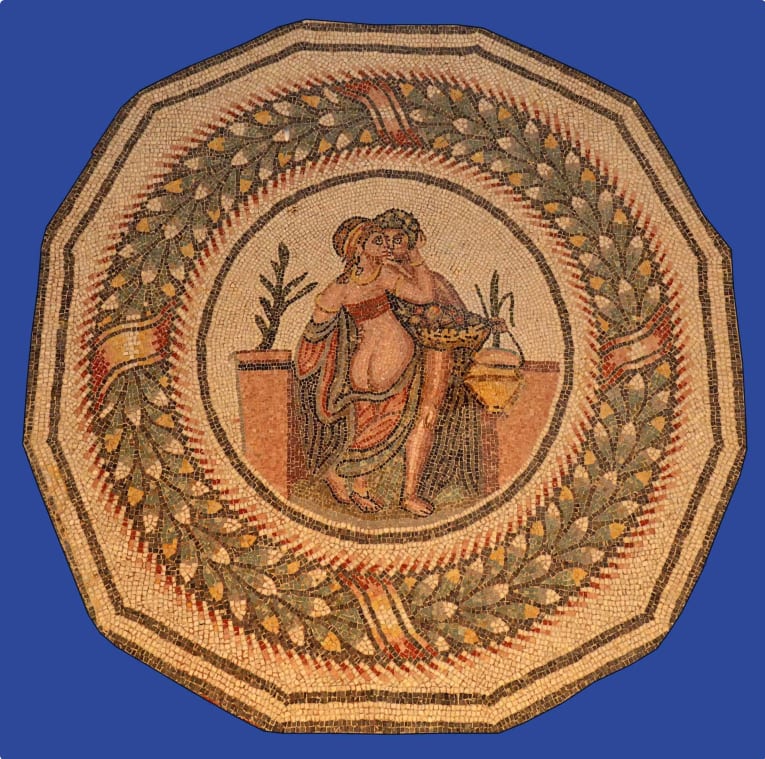
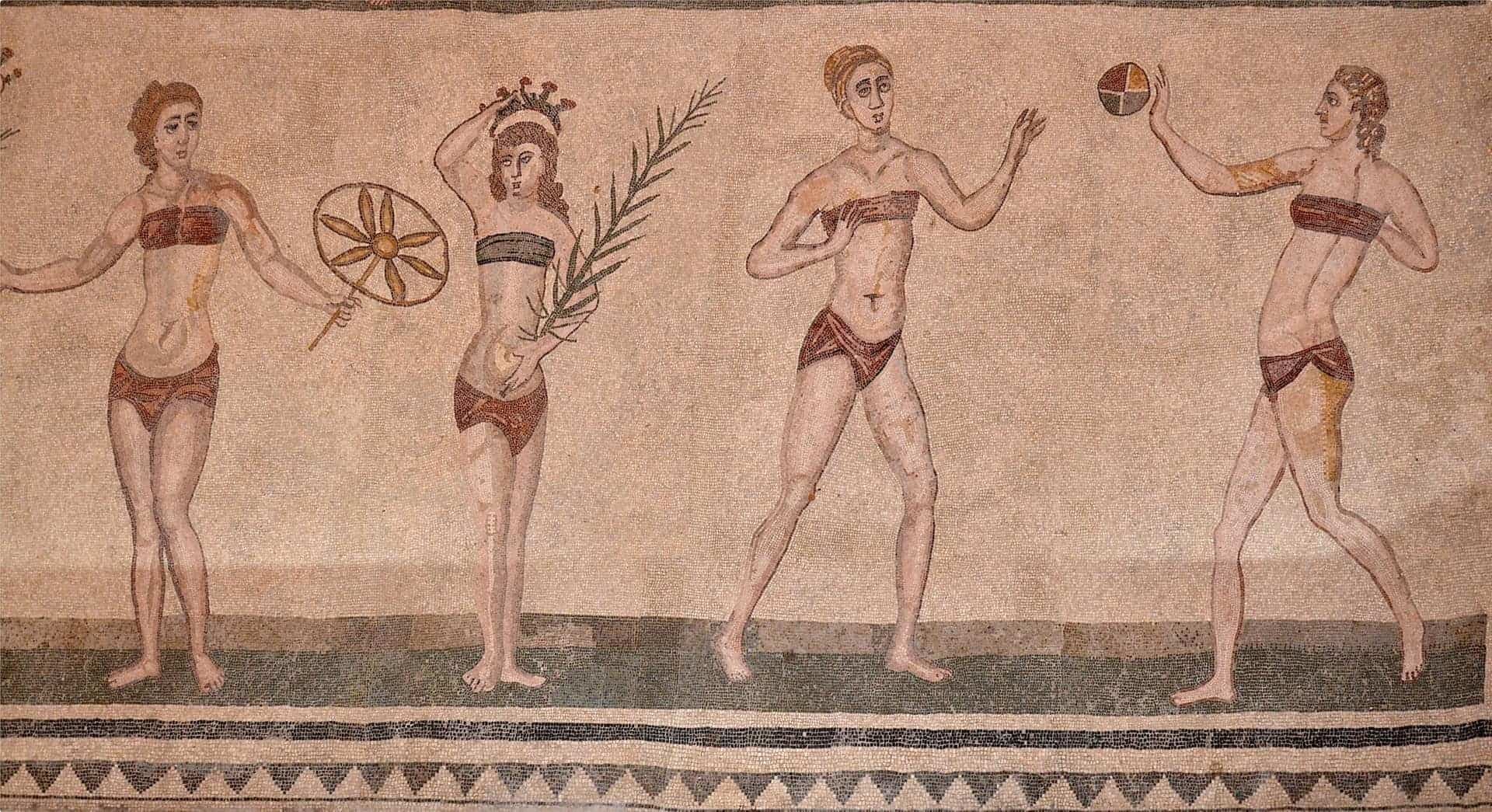
Ostrogoths acquire the island in 476AD
The Roman Empire in the west started to fall apart in the 5th century AD, breathing its last breath in 476 when Odoacer, a soldier loyal to Constantinople and the Byzantine Emperor Zeno (the Byzantine is the eastern arm of the Roman Empire), deposed the weak Emperor Romulus Augustus, who was better known by his derisive nickname Augustulus, or “Little Augustus”.
Odoacer took the Roman title patrician conferred by Zeno and ruled Italy as its king. Finding himself supported by the Roman Senate, Odoacer ruled Italy autonomously, paying only lip service to Zeno. He later supported the revolt against the emperor. Zeno responded by appointing Theodoric of the Ostrogoths (the eastern branch of the Goths, the other branch being the Visigoths) as the new King of Italy, pitting the two soldiers against each other.
Theodoric moved quickly and took control of the island of Sicily in 491. Before long he had invaded most of the Italian peninsula, forcing Odoacer to take refuge in Ravenna. Ravenna surrendered in 493. Theodoric lured his rival to a banquet under the guise of reconciliation and killed him.
The Gothic Wars and the Byzantines in the 7th Century
The Byzantine Empire, angling to conquer Italy, fought the Ostrogoths in the Gothic Wars to take control of Sicily. Control of the island moved from one foreign power to another, until Sicily, along with neighbouring Calabria in the Italian mainland, became a Byzantine province (the Theme of Sicily) in the 7th Century.
Constantinople’s influence on Sicily’s art and architecture remained strong even up to the 12th Century. La Martorana, a church in Palermo built in the 1100s, has a Byzantine dome and interior.
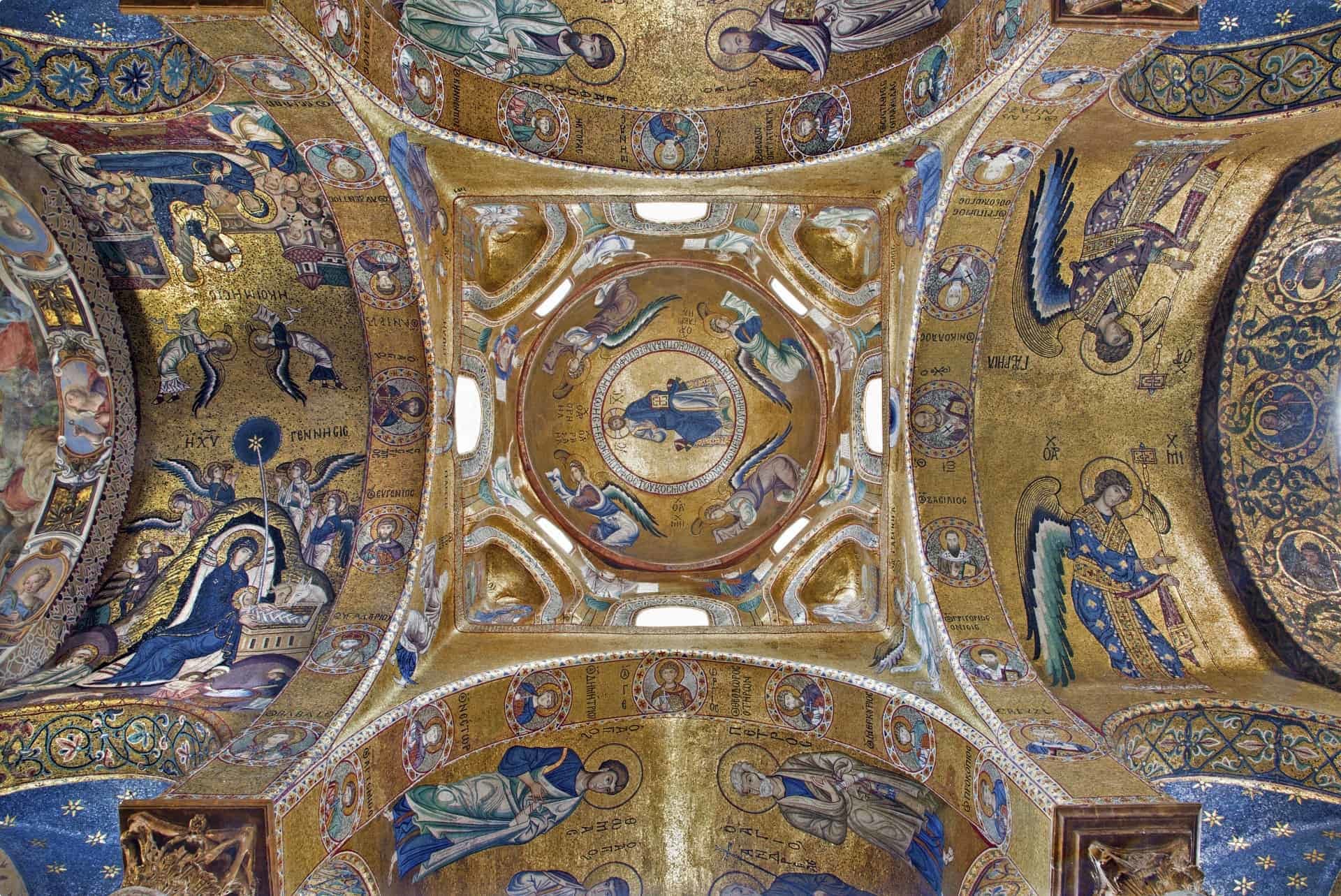
Arab Conquest in 827AD
The Arabs had already conquered the North African coast, but all of their raids sent to gain control of Sicily had been unsuccessful ever since the Byzantines invaded the island. That changed in 827 when Euphemius, commander of the Byzantine fleet in Sicily, forced a nun, Homoniza, to marry him. Constantine, who was general of the fleet and Euphemius’ superior, reported the commander’s exploits to Emperor Michael II. The emperor ordered Euphemius to end the marriage.
Euphemius responded by staging a revolt, killing General Constantine and occupying Syracuse. He named himself Emperor, but this victory was short-lived as another general rose up and forced him out of Sicily. Euphemius then fled to North Africa and asked for military support from the Tunisian emir Ziyadat-Allah, offering the emir rule of the island (which was a profitable source of tax revenue) if the emir would grant him safety and a place as governor.
A Century-long War
Ziyadat-Allah agreed to send troops, but victory did not come easy for the Tunisians. It took the Muslim force over a century to completely conquer the Byzantines, who put up considerable resistance in various cities. Syracuse, for example, surrendered only in 878, more than 50 years after Ziyadat-Allah’s troops first sailed for Sicily in support of Euphemius. Euphemius himself died in battle.
Various Sicilian outposts managed to hold out until the middle of the 10th Century, but eventually the whole of Sicily fell under Arab control.
Sicily Under Arab Rule 940-1052AD
Under the Kalbite dynasty (940-1052), Palermo grew into a major port, witnessing trade between Spain, North Africa, Italy, and France. Arab farmers improved irrigation and introduced more crops into Sicilian agriculture: cotton from Syria, pistachios from Persia, sugar cane, olive trees, and citrus. Even now, the olive oil produced in Sicily is renowned all over the world.
Visitors today can still visit a walled inner city called the Qasr (‘the palace’; the Sicilian name is ‘Cassaro‘) in Palermo, providing access to the grand mosque which is now the site of the Palermo Cathedral.

Visit Sicily
Do you want to learn more about Sicily’s colourful history after the 10th Century and to walk the streets of this incredible Mediterranean island? Join Odyssey Traveller on a special tour focused on Sicily’s ancient history, or a tour which will take you to the island and its nearby Mediterranean neighbours–Malta, Sardinia, and Corsica. Learn more about this region, and be invigorated by the warm weather and the lush Sicilian landscape.
Odyssey Traveller specialises in small-group tours for the active senior traveller, offering focused attention and flexibility, and carefully designed itineraries with destinations and historic stops that other tours may not cover.

Related Tours
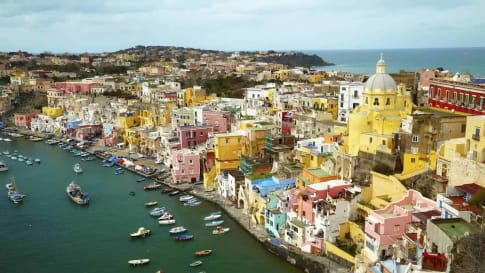
22 days
Jan, Apr, SepAncient History of Southern Italy & Sicily group tours
Visiting Italy
Our program for senior travellers, as well as featuring the rugged countryside of Southern Italy, also encompasses learning about the many civilisations that have shaped this land. We learn about the influence of the early Phoenicians, Greeks, Romans, Byzantines, Saracens, and Aragonese.
From A$16,995 AUD
View Tour
20 days
May, OctCaravaggio’s Journey | Small Group Tour in Italy
Visiting Italy, Malta
On this small group tour of Italy and Malta for mature and senior couples and solo travellers we trace the life of Caravaggio, exploring the artistic works he left behind and the tumultuous life he led. We follow him from his birthplace in Milan to Rome, Malta, Sicily and Naples. In each place he lived Caravaggio left behind a rich legacy of art for us to admire.
From A$15,125 AUD
View Tour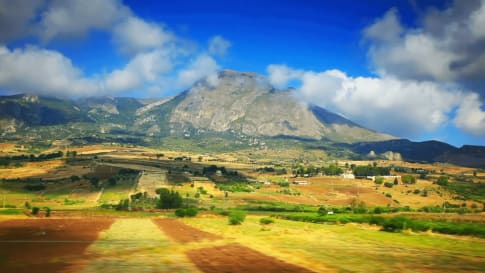
12 days
Apr, Oct, SepMalta & Sicily - Mediterranean Islands small group tour
Visiting Italy, Malta
For centuries Malta & Sicily, held the key to the Mediterranean. Unlike other European tour companies, Odyssey provides a tour leader and local guides to share detailed itineraries about the destinations on these small group journeys. For mature couples and solo travellers. A reasonable single supplement is charged.
From A$10,150 AUD
View Tour
25 days
Apr, Sep, OctMediterranean Islands Small Group Tour | Malta, Sicily, Sardinia and Corsica
Visiting Corsica, Italy
For centuries Malta, Sicily, Sardinia and Corsica held the key to the Mediterranean. Unlike other European tour companies, Odyssey provides a tour leader and local guides to share detailed itineraries about the destinations on these small group journeys. This escorted tour of western Mediterranean explores the geography, history, culture and peoples of these 4 islands. Small group tour for mature couples and solo travellers. A reasonable single supplement is charged.
From A$19,750 AUD
View Tour